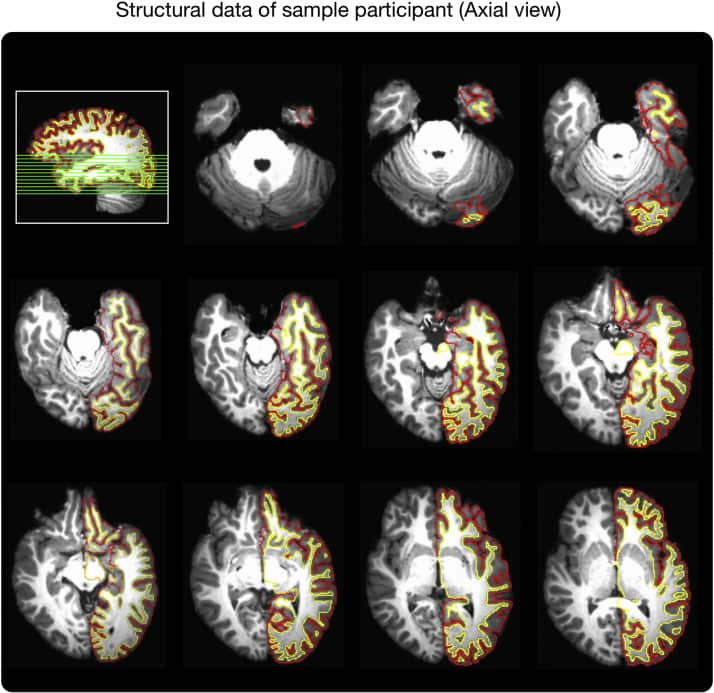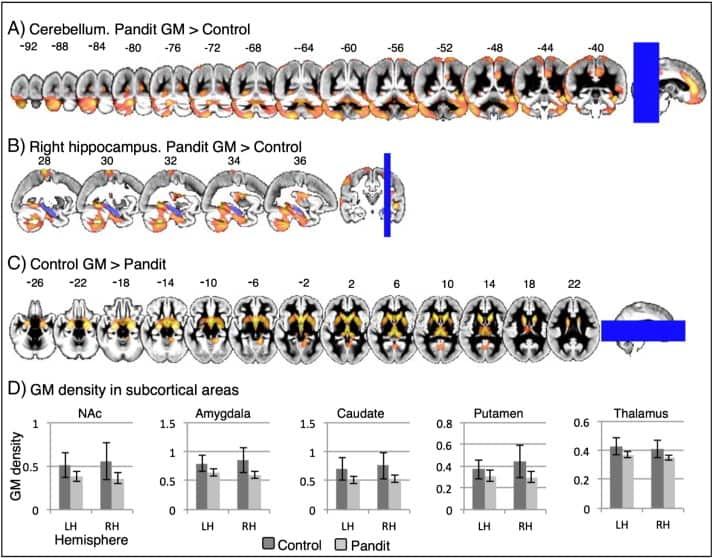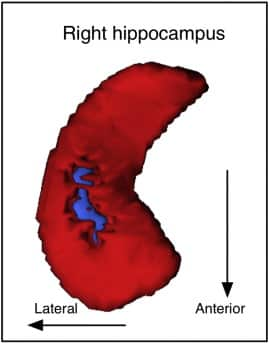More Coverage
Twitter Coverage
Satyaagrah
Written on
Satyaagrah
Written on
Satyaagrah
Written on
Satyaagrah
Written on
Satyaagrah
Written on
JOIN SATYAAGRAH SOCIAL MEDIA
"Sanskrit is the language of philosophy, science, and religion": A Neuroscientist, James Hartzell explored the "Sanskrit Effect" and MRI scans proved that memorizing ancient mantras increases the size of brain regions associated with cognitive function

The Itihasa and Purana are not just factual history or stories but narratives that cover various aspects of human endeavor. They not just reveal the past but pave way for the future and guide human aspirations. While the phala sruti of these works clearly talk about the benefits that one derive by listening/reciting/reading them, it may be interesting to re-explore the phala in the modern context. Cutting-edge research in the fields of psychology, neuroscience, and genetics creates an opportunity for this re-exploration of the benefits of this rich tradition.
The experiment on Neuroscience of Sanskrit Effect became quite popular in social media. The scientist observed, in the pandits who chanted, at least 10 percent more grey matter and numerous regions in the brain that were larger than normal. The results are amazing in many aspects. This research is interesting and relevant because, though through the phala sruti of the various texts we know that they chanting them lead to chitta shuddi and mukti, to neuroscientifically observe the benefits is exciting in the modern context and this increases the conviction of many who are looking at scientific proofs.
Paul Zak, in his paper titled Why Inspiring Stories Make Us React: The Neuroscience of Narrative, talks of his personal experience of watching a certain movie and the neuroscience behind the behavior of numerous people who watched the movie clippings as a part of an experiment. He found that immersive stories release oxytocin in the brain which alter the attitudes, beliefs and behavior of the listener. His current research has shown that oxytocin is responsible for virtuous behaviors, working as the brain’s “moral molecule.” Both the Sanskrit Effect research and Zak’s research give us insights into the benefits that Itihasa-Purana offer, especially when narrated in an experiential mode blended with story-telling, chanting, philosophical insights and historical narratives, similar to Ugrasrava Sauti’s narration of the Mahabharata in Naimisharanya.
Considerable excitement has been triggered through email and social media across India due to a recent “observation” reported by Dr. James Hartzell in the journal Scientific American. This neuroscientist has coined the term “The Sanskrit effect.” He writes that memorising Vedic mantras increases the size of brain regions associated with cognitive functions such as memory (both short-term and long-term).
He writes in his report that Indian tradition holds that rigorously memorising and reciting mantras enhances memory and thinking. In order to test this idea, Hartzell (and his colleagues from the University of Trento in Italy) teamed up with Dr Tanmay Nath and Dr Nandini Chatterjee Singh of the National Brain Research Centre (NBRC) at Manesar in Haryana. They chose to study 42 volunteers — 21 professionally qualified Sanskrit Pandits (aged around 22) who have been trained full-time daily for 7 years (total of over 10,000 hrs) in their childhood reciting the Shukla Yajurveda. These Pandits were recruited from Vedic Pandit schools in Delhi. As a control, they chose 21 age-matched males, students from a nearby college.
Hartzell has studied Sanskrit and Tibetan at Harvard and Columbia Universities and Cognitive Neuroscience at the University of Trento.
In his article, Hartzell discusses the potential benefits of learning Sanskrit on brain development. He cites research that has shown that Sanskrit speakers have larger and more developed brains in certain areas, including the hippocampus, which is involved in memory and learning. Hartzell also notes that Sanskrit is a very regular language, with consistent grammar and pronunciation. This makes it easier to learn and remember, which could contribute to the brain benefits seen in Sanskrit speakers.
Hartzell also discusses the role of chanting in Sanskrit. He notes that chanting is a traditional practice in Hinduism and Buddhism and that it is believed to have a number of benefits, including stress reduction, improved focus, and increased relaxation. Hartzell suggests that the repetitive nature of chanting may help to stimulate the brain and promote neural plasticity.
|
Brain imaging
The brains of all 42 participants were examined using the method called structural magnetic resonance, with the magnetic resonance imaging instrument at NBRC. This method allows the study of the size and shape of individual parts of brain. The so called grey matter (GM) of the brain is a region full of neuronal cells, and contains areas involved in muscle control, sensory perception, memory, emotions, speech and decisionmaking. And connected it to it is white matter (WM) — bundles of nerve cells that carry signals to GM. The hippocampus is a small organ located within the central region of the brain, and it registers and regulates emotions associated with memory (particularly long-term memory) and has front and back sections. The back part appears associated with better memory and supports recollection of memory. And the cortex, which is the outermost layer surrounding the brain (essentially a cover or envelope), with its tightly packed nerve cells, is responsible for higher thought processes such as decisionmaking.
The Indo-Italian team analysed the brain regions of the 21 Pandits and 21 control volunteers and found some remarkable differences between the two. They found the grey matter in Pandits to be denser and the cortex thicker than in ‘controls’, and the hippocampus regions, associated with long- and short-term memory were more pronounced. (Interested readers can access this paper free at ). Indeed, a similar experiment, again using Vedic Pandits (this time in Houston, TX, USA), was done earlier by Dr. Giridhar Kalamangalam and T. M. Ellmore (accessible free in Frontiers in Human Neuroscience, 2014 Oct 20;8:833. doi: 10.3389/fnhum.2014.00833. eCollection 2014), and they too noted thicker cortex in the Pandits than in controls.
Importantly, these changes in the brain are not temporary but stay for long. That means that the power of memory, decision-making, sensory perception and such would last longer in those who were trained earlier. Dr. Danker and Dr. Anderson, who was studying this aspect, actually titled their 2010 review as “The ghosts of brain states past; remembering reactivates the brain regions engaged during coding” ( Psychol. Bull., 136, 87-102. doi: 10.1037/a0017937). Here coding refers to the earlier rigorous practice and memorising.
|
His Stint with Sanskrit and the Project
Hartzell’s report was tested when he and his colleagues from the University of Trento in Italy collaborated with Dr. Tanmay Nath and Dr. Nandini Chatterjee Singh of the National Brain Research Centre (NBRC) at Manesar in Haryana. Their study was focused on 42 volunteers — 21 professionally qualified Sanskrit Pandits reciting the Shukla Yajurveda. The project was funded by the India-Trento Partnership for Advanced Research, a program between India's Department of Science and Technology (DST) and Italy's province of Trentino and the University of Trento.
With the help of the Indian government, he was able to recruit professionally qualified and trained Yajurveda Pandits for the study. Hartzell visited Maharshi Sandeepani Rashtriya Veda Vidya Pratishthan and was treated to demonstration recitations. He attended a Vedic recitation festival in Ujjain and also visited the All India Elocution Contest in Bangalore in 2012, where the top students from Sanskrit colleges around the country compete in the golden stick test in a wide range of Sanskrit subjects (not just Vedas). It took a couple of years to set the study up.
Once they set everything up (establishing all the agreements, mutual understandings, funding, recruitment plans, experimental design, scanning plans, etc.) the actual MRI scanning time involved was over several months. “The analysis part of the study and writing up of the paper took many months --- as is common for PhD projects where the PhD student is learning new analysis methods,” he said. In all these events, and some others, he was deeply impressed “by the ability of Sanskrit Pandits to recite, exactly from memory, complex Sanskrit texts, and to explain them in Sanskrit,” he said.
However, this project was not without challenges: “Right from gaining approval through the various administrative and government organisations involved in both India and Italy to cultural challenges in introducing the idea of the study to senior officials of the government's Vedic organisation and then communicating the specifics to the participants recruited from the Pandit schools,” said Hartzell. Tanmay Nath played a key role in the project's success. The other challenges were logistical (bringing all the Pandits to NBRC for scanning) and getting the scanning completed on time and all the normal challenges of complex neuroimaging data analysis and publication.
Sanskrit effect?
For him, Sanskrit Effect is to be “able to think clearly”. He explained it using a metaphor; although, he called it “inadequate”. “Moving into thinking in Sanskrit when translating from Sanskrit (rather than thinking primarily in my native English) brings with it a profound shift in cognitive experience that might be compared to something such as (and here is the metaphorical aspect) moving from walking in the air, to swimming in water while still breathing air.”
This, Hartzell said, “Is quite different and I find that my mental experience is more fluid. There's a certain quality to the cognitive experience that is a bit difficult to describe in English. Though there are many aspects to it and these are described in some of the Sanskrit texts themselves.”
Further, the neuroscientist explained that when he moves back into English afterward, he tends to think a bit more clearly about other things. “So it has some similarities to swimming for exercise in this sense---afterwards one feels healthier and livelier and can think more clearly,” he said.
The language unchanged
Throughout the interaction, Hartzell maintained that there needs to be more scientific research in finding out the special effect that Sanskrit has on the mind. So what exactly does he find interesting about the language? “We still have a very good idea of the correct pronunciation of the words dating back over 3000 years, thanks to the many lineages of exact memorisation and recitation of Sanskrit texts (not just the Vedas themselves),” he said.
From what he understands, this may make “Sanskrit unique among the world’s languages.” Because, like Hartzell explains, typically the pronunciation of an old language changes quite considerably over the centuries.
“Both English and modern Tibetan, for instance, have many words with letters that are no longer pronounced,” he said. Providing an example, he said: “While the actual word in English is “through”, but it is pronounced “thru”.”
“Sanskrit's preservation of pronunciation over the many centuries provides a very interesting sort of phonemic time capsule,” he said.
Hartzell has years of experience in translation and, therefore, quite an in-depth knowledge of some aspects of the Sanskrit tradition. He became curious to find out whether there might be some way to scientifically investigate and understand the basis of the Sanskrit effect. “Why was it that the experience of working deeply in the language (as one must do in order to translate Sanskrit texts) seemed to have such a profound effect on how my mind functioned? So when the chance arose to pursue this question more deeply, I was really pleased and inspired and have worked very hard on it.”
Could chanting ancient Sanskrit mantras increase the size of your brain?
 |
 |
| Source: NeuroImage, Dr James Hartzell/ Center for Mind/Brain Sciences (CIMeC) Italy/National Brain Research Centre, (NBRC) India |
 |
| Source: NeuroImage, Dr James Hartzell/ Center for Mind/Brain Sciences (CIMeC) Italy/National Brain Research Centre, (NBRC) India |
 |
| "We had never seen any studies that showed such a large increase in the Hippocampus and this is incredibly important for understanding how memory works in the brain." he told SBS Hindi. Source: NeuroImage, Dr James Hartzell/ Center for Mind/Brain Sciences (CIMeC) Italy, National Brain Research Centre, (NBRC) India |
"One of the things that my fellow translators and I had noticed was that when you translate the texts from Sanskrit to English, there is some sort of a real profound cognitive shift that happens and it's hard to explain but it's so real, everybody knows about it," he said.
Tradition kept alive
Here are some references that you can use to learn more about Hartzell's article and the research on the benefits of learning Sanskrit:
References:
- Hartzell, J. F. (2012). A neuroscientist explores the "Sanskrit effect." Scientific American Mind, 23(1), 44-49.
- Jain, S., & Kaur, S. (2016). Effects of learning Sanskrit on cognitive abilities: A review of literature. Journal of Indian Psychology, 34(1), 1-14.
- Mishra, S. K., & Singh, V. (2017). Effect of learning Sanskrit on cognitive abilities of school children. International Journal of Research in Humanities and Social Sciences, 7(1), 1-10.
- Tiwari, A., & Tiwari, A. (2018). Impact of learning Sanskrit on cognitive abilities of school children. International Journal of Research in Humanities and Social Sciences, 8(1), 1-10.
- ScientificAmerican
 Support Us
Support Us
Satyagraha was born from the heart of our land, with an undying aim to unveil the true essence of Bharat. It seeks to illuminate the hidden tales of our valiant freedom fighters and the rich chronicles that haven't yet sung their complete melody in the mainstream.
While platforms like NDTV and 'The Wire' effortlessly garner funds under the banner of safeguarding democracy, we at Satyagraha walk a different path. Our strength and resonance come from you. In this journey to weave a stronger Bharat, every little contribution amplifies our voice. Let's come together, contribute as you can, and champion the true spirit of our nation.
 |  |  |
| ICICI Bank of Satyaagrah | Razorpay Bank of Satyaagrah | PayPal Bank of Satyaagrah - For International Payments |
If all above doesn't work, then try the LINK below:
Please share the article on other platforms
DISCLAIMER: The author is solely responsible for the views expressed in this article. The author carries the responsibility for citing and/or licensing of images utilized within the text. The website also frequently uses non-commercial images for representational purposes only in line with the article. We are not responsible for the authenticity of such images. If some images have a copyright issue, we request the person/entity to contact us at This email address is being protected from spambots. You need JavaScript enabled to view it. and we will take the necessary actions to resolve the issue.
Related Articles
- A Different 9/11: How Vivekananda Won Americans’ Hearts and Minds
- 21-yr-old girl Bina Das shot Bengal Governor in her convocation programme at Calcutta University, got Padma Shri but died in penury
- The Calculated Destruction of Indian Gurukuls (Education System) by British Raj which resulted in the tormented Indian Spirit
- "Do your duty unto others. This is the call of time. Ponder over why you have taken birth": Maharshi Vyasa, the author of Mahabharata asked Ganesha to aid him in writing the epic, but Ganesha imposed a condition that Vyasa narrate the story without pause
- Godse's speech and analysis of fanaticism of Gandhi: Hindus should never be angry against Muslims
- Unsung Heroine Pritilata Waddedar, Who Shook The British Raj at the age of 21
- History books should teach India’s civilisational, linguistic heritage, not unfounded claims: Parliamentary Committee meets to discuss NCERT books
- How Chhatrapati Shivaji Maharaj was establishing Hindu Samrajya by concluding centuries of Islamic oppression - Historian GB Mehandale destroys secular propaganda against Hindu Samrajya Divas
- BHU starts India's first Hindu Studies course with topics on ancient warfare, military strategy, women in military
- Bhagwad Gita course for corporates is all set to launch at IIM Ahmedabad, will teach management and leadership
- An Artisan Heritage Crafts Village: Indigenous Sustainability of Raghurajpur
- Freedom struggle of Gurjars against Britishers at Koonja in 1824: 100s of Gurjars Martyred and 100s Hung in Single Tree
- Dangers of losing our identity: Guru Tegh Bahadur forgotten and Aurangzeb being glorified
- ‘Kanyādāna’ in an Age of lunacy and trending social media campaigns: To Give or Not to Give
- "विद्या नाम नरस्य कीर्तिरतुला भाग्यक्षये चाश्रयो, धेनुः कामदुधा रतिश्च विरहे नेत्रं तृतीयं च सा": Modi Govt finally tames bureaucracy & recognizes proposal of establishing the Bharatiya Shiksha Board to impart traditional knowledge needed for modern age




























